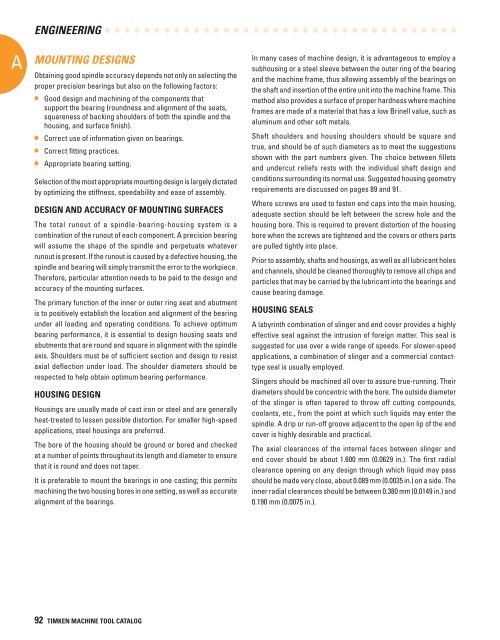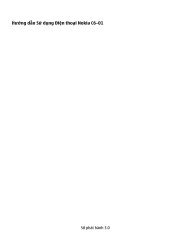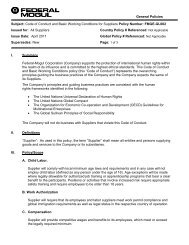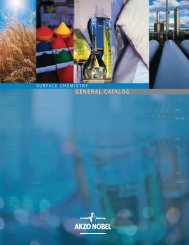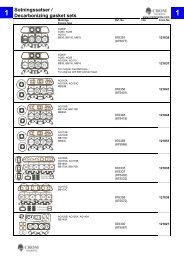You also want an ePaper? Increase the reach of your titles
YUMPU automatically turns print PDFs into web optimized ePapers that Google loves.
A<br />
ENGINEERING<br />
MOUNTING DESIGNS<br />
Obtaining good spindle accuracy depends not only on selecting the<br />
proper precision bearings but also on the following factors:<br />
• Good design and machining of the components that<br />
support the bearing (roundness and alignment of the seats,<br />
squareness of backing shoulders of both the spindle and the<br />
housing, and surface finish).<br />
• Correct use of in<strong>for</strong>mation given on bearings.<br />
• Correct fitting practices.<br />
• Appropriate bearing setting.<br />
Selection of the most appropriate mounting design is largely dictated<br />
by optimizing the stiffness, speedability and ease of assembly.<br />
DESIGN AND ACCURACY OF MOUNTING SURFACES<br />
The total runout of a spindle-bearing-housing system is a<br />
combination of the runout of each component. A precision bearing<br />
will assume the shape of the spindle and perpetuate whatever<br />
runout is present. If the runout is caused by a defective housing, the<br />
spindle and bearing will simply transmit the error to the workpiece.<br />
There<strong>for</strong>e, particular attention needs to be paid to the design and<br />
accuracy of the mounting surfaces.<br />
The primary function of the inner or outer ring seat and abutment<br />
is to positively establish the location and alignment of the bearing<br />
under all loading and operating conditions. To achieve optimum<br />
bearing per<strong>for</strong>mance, it is essential to design housing seats and<br />
abutments that are round and square in alignment with the spindle<br />
axis. Shoulders must be of sufficient section and design to resist<br />
axial deflection under load. The shoulder diameters should be<br />
respected to help obtain optimum bearing per<strong>for</strong>mance.<br />
HOUSING DESIGN<br />
Housings are usually made of cast iron or steel and are generally<br />
heat-treated to lessen possible distortion. For smaller high-speed<br />
applications, steel housings are preferred.<br />
The bore of the housing should be ground or bored and checked<br />
at a number of points throughout its length and diameter to ensure<br />
that it is round and does not taper.<br />
It is preferable to mount the bearings in one casting; this permits<br />
machining the two housing bores in one setting, as well as accurate<br />
alignment of the bearings.<br />
In many cases of machine design, it is advantageous to employ a<br />
subhousing or a steel sleeve between the outer ring of the bearing<br />
and the machine frame, thus allowing assembly of the bearings on<br />
the shaft and insertion of the entire unit into the machine frame. This<br />
method also provides a surface of proper hardness where machine<br />
frames are made of a material that has a low Brinell value, such as<br />
aluminum and other soft metals.<br />
Shaft shoulders and housing shoulders should be square and<br />
true, and should be of such diameters as to meet the suggestions<br />
shown with the part numbers given. The choice between fillets<br />
and undercut reliefs rests with the individual shaft design and<br />
conditions surrounding its normal use. Suggested housing geometry<br />
requirements are discussed on pages 89 and 91.<br />
Where screws are used to fasten end caps into the main housing,<br />
adequate section should be left between the screw hole and the<br />
housing bore. This is required to prevent distortion of the housing<br />
bore when the screws are tightened and the covers or others parts<br />
are pulled tightly into place.<br />
Prior to assembly, shafts and housings, as well as all lubricant holes<br />
and channels, should be cleaned thoroughly to remove all chips and<br />
particles that may be carried by the lubricant into the bearings and<br />
cause bearing damage.<br />
HOUSING SEALS<br />
A labyrinth combination of slinger and end cover provides a highly<br />
effective seal against the intrusion of <strong>for</strong>eign matter. This seal is<br />
suggested <strong>for</strong> use over a wide range of speeds. For slower-speed<br />
applications, a combination of slinger and a commercial contacttype<br />
seal is usually employed.<br />
Slingers should be machined all over to assure true-running. Their<br />
diameters should be concentric with the bore. The outside diameter<br />
of the slinger is often tapered to throw off cutting compounds,<br />
coolants, etc., from the point at which such liquids may enter the<br />
spindle. A drip or run-off groove adjacent to the open lip of the end<br />
cover is highly desirable and practical.<br />
The axial clearances of the internal faces between slinger and<br />
end cover should be about 1.600 mm (0.0629 in.). The first radial<br />
clearance opening on any design through which liquid may pass<br />
should be made very close, about 0.089 mm (0.0035 in.) on a side. The<br />
inner radial clearances should be between 0.380 mm (0.0149 in.) and<br />
0.190 mm (0.0075 in.).<br />
92 TIMKEN MACHINE TOOL CATALOG


